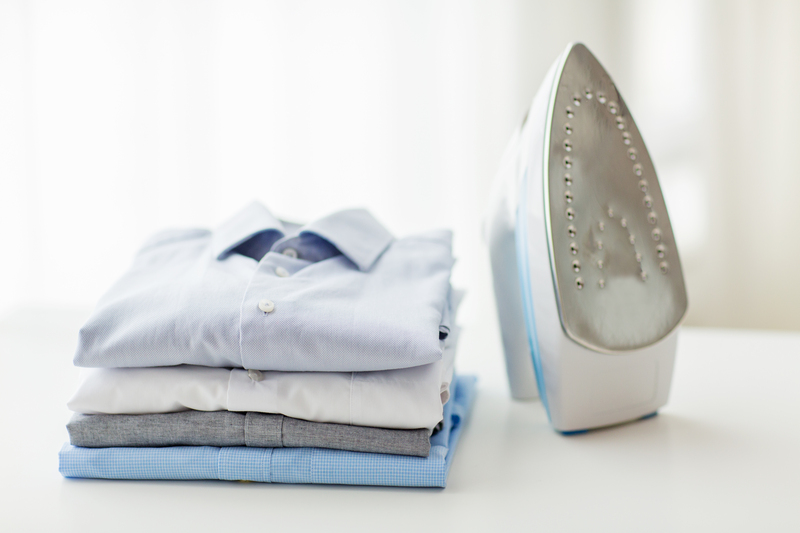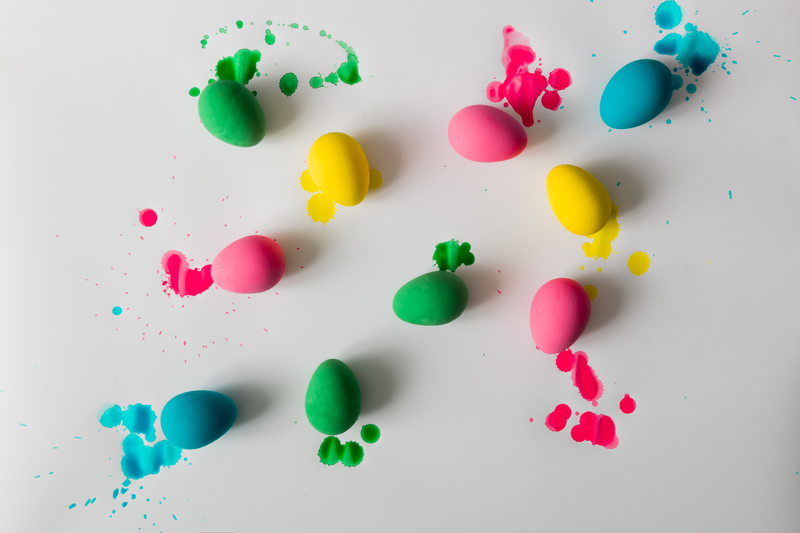Master the Art of Curtain Cleaning - Tips and Tricks
Posted on 18/08/2025
Master the Art of Curtain Cleaning - Tips and Tricks
When it comes to achieving a spotless and healthy home, curtain cleaning is often overlooked. Yet, freshly cleaned curtains not only uplift the appearance of your interiors but also contribute to better indoor air quality. Whether you own luxurious velvet drapes or simple sheer curtains, properly caring for them is crucial. In this guide, we'll reveal the best tips, techniques, and tricks for mastering the art of cleaning curtains, ensuring their beauty and longevity for years to come.
Why Should You Prioritize Curtain Cleaning?
Many people underestimate the importance of regular curtain maintenance. Curtains act as barriers that absorb dust, allergens, pet hair, and even odors. Over time, neglect can lead to:
- Increased allergy symptoms in your home
- Unpleasant odors that permeate the room
- Stained, faded, or tired-looking fabrics
- Shortened lifespan of your window treatments
Routine curtain cleaning not only preserves the aesthetic appeal of your window coverings but also promotes a cleaner, healthier environment for your family and guests.

Know Your Curtain Types: The Fabric Matters
Different materials require different cleaning methods. Before diving in, always check the care label attached to your drapes or curtains. Here are the most common types:
- Cotton: Durable and usually machine-washable.
- Linen: Delicate and best hand-washed or dry-cleaned.
- Polyester: Sturdy, often easy to clean with a washer.
- Silk: Luxurious and usually requires professional dry cleaning.
- Velvet: Should be steam cleaned or sent to a professional.
- Sheers and Lace: Extremely delicate; hand-wash or machine-wash on gentle cycle.
Remember, the right method preserves color, texture, and the fabric's integrity.
General Tips Before You Start Curtain Cleaning
- Always read the care labels before any cleaning process.
- Remove all hooks, rings, and hardware to prevent snagging.
- Test for colorfastness by dabbing a hidden part of fabric with water and mild detergent.
- Shake and vacuum the curtains to remove loose dust and debris before washing.
- Work in a clean, spacious area to avoid getting your curtains dirty again during the cleaning process.
How to Hand Wash Curtains Effectively
Hand washing is ideal for delicate or intricately decorated curtains. Here's the recommended approach:
- Fill a bathtub or large basin with lukewarm water.
- Add a mild laundry detergent suitable for delicate fabrics.
- Submerge the curtains gently, swishing them around without wringing or twisting to prevent damage.
- Let them soak for about 10-15 minutes.
- Rinse thoroughly with clean water until all soap has been removed.
- Press out excess water by folding and pressing--not twisting.
- Hang to dry outdoors away from direct sunlight to prevent fading.
Hand cleaning is especially recommended for lace, silk, and vintage window coverings.
Machine Washing Curtains: Tips for Success
Many modern drapes are now machine-washable. To clean them properly:
- Choose a gentle cycle with cool or lukewarm water.
- Use a mild detergent and, for extra protection, place curtains inside a large mesh laundry bag.
- Do not overload the machine; wash curtains alone or in small groups by fabric type or color.
- Immediately remove from the washer after the cycle to avoid wrinkling.
- Hang to air dry, smoothing out creases with your hands or a gentle shake.
- Iron while slightly damp, if needed, according to the fabric instructions.
Bonus Tip: Add a cup of white vinegar to your rinse cycle to help brighten whites and reduce static cling!
Dry Cleaning Curtains: When and How
Some fabrics, especially wool, silk, velvet, and lined curtains, must be professionally dry cleaned to maintain their structure and appearance. Here's how to tell if professional curtain cleaning is necessary:
- The care label specifically mentions "dry clean only".
- Curtains have intricate embellishments, pleats, or special linings.
- There are stubborn stains or odors you can't remove at home.
Always inform your dry cleaner about any spots or stains and the fabric type before leaving your curtains.
Steam Cleaning Curtains: A Modern Solution
Steam cleaning is a fast, efficient, and chemical-free method to refresh curtains without taking them down. Here's how:
- Use an upholstery or garment steamer with a clean nozzle.
- Start at the top of the curtain, working downwards, holding the steamer about 6 inches away.
- Move in gentle, vertical strokes to avoid saturating the fabric.
- Allow to air dry in place.
Steam is especially effective for removing odors and killing dust mites embedded in thick or lined curtains.
Spot Cleaning Curtains: Tackle Stains Immediately
Stains can be particularly noticeable on curtains. For best results:
- Blot (do not rub) the stain with a clean, dry cloth to absorb any excess liquid.
- Mix a solution of water and mild detergent. For tougher stains, add a drop of white vinegar.
- Gently dab the solution onto the stain with a clean cloth, working from the outer edges inward.
- Rinse and blot dry with another cotton cloth.
Always test your cleaning solution on a small, inconspicuous area first to avoid damaging your curtains.
Drying Curtains: The Right Way to Prevent Damage
Proper drying is essential to keep your curtains looking crisp and new.
- Air-drying is best--hang curtains on a sturdy rod or washing line, ensuring they don't bunch up.
- Avoid direct sunlight for colored curtains to prevent fading.
- Never use a hot tumble dryer; if you must use a dryer, select a low heat or air fluff setting, and remove promptly.
- Straighten and smooth out any creases by hand or with a cool iron as soon as curtains are damp, not fully dry.
Ironing and Steaming: The Secret to Wrinkle-Free Drapes
Wrinkles can make even freshly cleaned curtains look untidy. To keep your window treatments crisp:
- Iron on the reverse side using fabric-appropriate settings (generally lower heat for synthetics and delicate fabrics).
- Use a pressing cloth for extra protection, especially on delicate or patterned curtains.
- A garment steamer works wonders for removing mild wrinkles without direct contact.
- Rehang your curtains while slightly damp to allow gravity to help smooth out the remaining creases.
Professional Curtain Cleaners vs. DIY: Weighing Your Options
DIY curtain cleaning can be easy and economical, but there are times when hiring professionals is the best choice. Consider:
Advantages of Professional Curtain Cleaning:- Expertise in dealing with all fabrics, including delicate or antique curtains.
- Specialized equipment for deeper, more thorough cleaning and stain removal.
- Pick-up and delivery services for convenience.
- Extended curtain life due to proper professional care.
- Cost savings and flexibility to clean on your schedule.
- Allows for frequent routine upkeep between professional cleanings.
- Quick, effective spot cleaning for everyday stains or spills.
Ultimately, a combination of both approaches works best--a deep professional clean once or twice a year, with regular light cleaning at home in between.
How Often Should You Clean Curtains?
As a rule of thumb, follow this schedule for optimal curtain care:
- Weekly: Light vacuuming or dusting with a soft brush attachment.
- Monthly: Spot clean stains and shakes out dust.
- Every 3-6 months: Full wash or steam clean, depending on your curtain type and fabric.
- Annually: Professional deep cleaning for lined or delicate window treatments.
Bonus: If you live in a high-traffic, urban, or pet-friendly home, increase the cleaning frequency to maintain freshness and air quality.
Allergy-Friendly Curtain Cleaning Tips
For families prone to allergies, regular curtain cleaning is crucial. Mites, pollen, and pet dander can easily settle in curtain fibers. Prioritize:
- Frequent vacuuming using a HEPA filter attachment
- Machine washing in hot water where fabrics allow
- Sun-drying to disinfect naturally
- Considering anti-allergy curtains that are treated to repel allergens
Essential Products and Tools for Curtain Cleaning
- Vacuum cleaner with upholstery attachment
- Mild detergent free of bleach or harsh chemicals
- Laundry bags for machine-wash protection
- Garment or upholstery steamer
- Spray bottle for spot treatment
- Soft microfiber cloths
- Stain remover suitable for fabrics
Top Extra Tips for Beautiful Curtains Year-Round
- Rotate or change your curtains seasonally to promote even wear and reduce sun damage.
- Install curtain liners to protect drapes from sun and allergens.
- Use tiebacks to keep curtains open during the day and prevent them from collecting excess dust.
- Air out the room frequently to reduce moisture and prevent mold or mildew growth on fabrics.
- Rehang curtains promptly after cleaning to minimize wrinkles and stretching.

Frequently Asked Questions About Curtain Cleaning
Can I wash all curtains in the washing machine?
No--always check the care label. Some fabrics (like silk, velvet, or lined curtains) require special handling and professional cleaning.
How do I remove bad odors from curtains?
Try hanging them outside on a breezy day, steam cleaning, or using a fabric-safe deodorizer. Baking soda sprinkled overnight can also help with tough odors before washing.
Is it safe to use bleach on white curtains?
It's best to avoid bleach, as it can weaken fibers and cause yellowing. For brightening, add a cup of white vinegar to your rinse cycle instead.
How do I prevent curtains from shrinking after washing?
Use cold or lukewarm water and never tumble dry on high heat. Iron or hang curtains while damp to help them keep their shape.
Conclusion: Transform Your Home with Pristine Curtains
Mastering the art of curtain cleaning is an achievable goal that delivers lasting rewards. With the right knowledge and a little bit of effort, you'll keep your window treatments fresh, beautiful, and allergy-free year-round. Remember:
- Check fabric and care instructions before any cleaning method.
- Vacuum, shake, and spot clean regularly.
- Wash, steam, or take curtains for professional cleaning as needed.
- Dry and rehang them correctly for the best appearance.
Take pride in your curtain cleaning routine--your home (and your health) will thank you for it!




